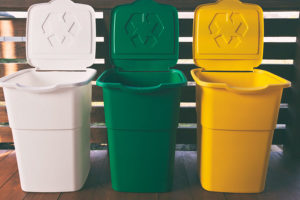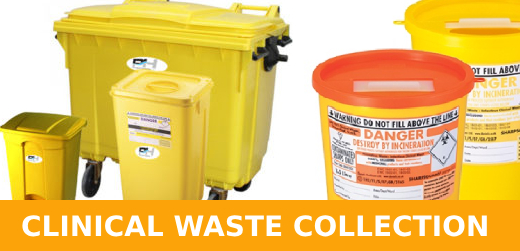Clinical Waste Types
Offensive Waste
 Offensive waste is waste generated by healthcare activities that are not infectious and don’t contain medicines, chemicals or sharps, but may cause offence to anyone who comes into contact with it. It’s a legal requirement to segregate hazardous wastes (such as infectious waste) from non-hazardous wastes (such as offensive waste) to ensure that segregation is maintained and mixing is prevented.
Offensive waste is waste generated by healthcare activities that are not infectious and don’t contain medicines, chemicals or sharps, but may cause offence to anyone who comes into contact with it. It’s a legal requirement to segregate hazardous wastes (such as infectious waste) from non-hazardous wastes (such as offensive waste) to ensure that segregation is maintained and mixing is prevented.
Offensive Waste is classified under (EWC 18-01-04) and is defined in The Controlled Waste Regulations 1992 some waste types that fall into this category include, but are not limited to;
- Sanitary hygiene waste
- Incontinence pads
- Nappy waste
- Some tattooist wastes
- Some dental waste
- Gloves, gowns and masks and other outer protective garments or dressings that have not been contaminated with bodily fluids
This waste stream is usually disposed of via incineration or taken to a non-hazardous landfill site by a registered waste carrier.
Offensive Waste is generally disposed of into internal clinical bins and yellow tiger stripe bags, plus external wheelie bins from 240 Litres up to 1000 Litres.
External wheelie bins are emptied on agreed frequencies with wheelie bin package collections being the most cost effective method of disposing of your waste.
Infectious Waste
Infectious waste mostly classified as (EWC 18-01-03) is also referred to as Hazardous Clinical waste and is mainly produced by but not limited to healthcare establishments such as hospitals, clinics, doctor’s surgeries, dental, nursing homes and veterinary practises.
Infectious waste is waste that contains viable micro-organisms or their toxins (known collectively as pathogens) which are known or reliably believed to cause disease in humans or other living organisms. Any waste that is known or reliably believed not to contain viable pathogens is not an infectious waste.
Infectious waste can be any kind of waste which contains properties which may be harmful to human health or the environment. It could be completely or partly made up from:
- Blood or other bodily fluids
- Swabs or dressings
- Human or animal tissue
- Drugs or pharmaceutical products
- Needles, syringes and other sharp implements
- Excretions
It’s the responsibility of the producer of the waste to correctly describe and classify their waste. For determining whether or not waste is infectious, In practice defining waste streams is a role undertaken by infection prevention practitioners and or waste management professionals like Principal Hygiene who can assist clinical waste producers to draw up policies and procedures in accordance with best practice guidance.
Phone 0800 124 4680 or use our Enquiry Form
